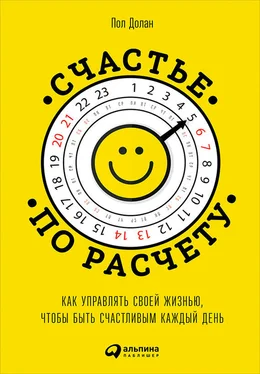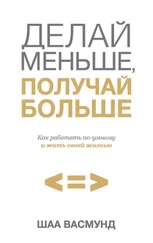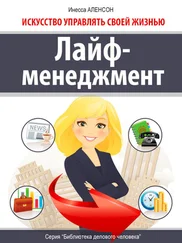Wansink B. Super bowls: serving bowl size and food consumption. Journal of the American Medical Association 2005; 293: 1723–28.
Chiou W., Yang C., Wan C. Ironic effects of dietary supplementation illusory invulnerability created by taking dietary supplements licenses health-risk behaviors. Psychological Science 2011; 22: 1081–86.
Kaptchuk T.J., Friedlander E., Kelley J.M., et al. Placebos without deception: a randomized controlled trial in irritable bowel syndrome. PLoS ONE 2010; 5: e15591.
Plassmann H., Mazar N., Robitaille N., Linder A. The origin of the pain of paying. Advances in Consumer Research 2011; 39: 146.
Werner C.M., Turner J., Shipman K., et al. Commitment, behavior, and attitude change: an analysis of voluntary recycling. Journal of Environmental Psychology 1995; 15: 197–208.
Turner-McGrievy G., Tate D. Weight loss social support in 140 characters or less: use of an online social network in a remotely delivered weight loss intervention. Translational Behavioral Medicine: Practice, Policy, Research 2013: 1–8.
Ryan R.M. Further examining the American dream: differential correlates of intrinsic and extrinsic goals. Personality and Social Psychology Bulletin 1996; 22: 280–87.
Koo M., Fishbach A. The small-area hypothesis: effects of progress monitoring on goal adherence. Journal of Consumer Research 2012; 39: 493–509.
Giné X., Karlan D., Zinman J. Put your money where your butt is: a commitment contract for smoking cessation. American Economic Journal: Applied Economics 2010; 2: 213–35.
Dunn E., Norton M. Happy money: the science of smarter spending. Simon & Schuster, 2013.
Thaler R. Toward a positive theory of consumer choice. Journal of Economic Behavior & Organization 1980; 1: 39–60.
De La Ronde C., Swann W.B. Partner verification: restoring shattered images of our intimates. Journal of Personality and Social Psychology 1998; 75: 374.
Шуровьески Дж. Мудрость толпы. Почему вместе мы умнее, чем поодиночке, и как коллективный разум влияет на бизнес, экономику, общество и государство. – Манн, Иванов и Фербер, 2014.
Bargh J.A., Williams E.L. The automaticity of social life. Current Directions in Psychological Science 2006; 15: 1–4.
Dimberg U., Thunberg M. Unconscious facial reactions to emotional facial expressions. Psychological Science 2000; 11: 86.
Parkinson B., Simons G. Affecting others: social appraisal and emotion contagion in everyday decision making. Personality and Social Psychology Bulletin 2009; 35: 1071–84.
Totterdell P. Catching moods and hitting runs: mood linkage and subjective performance in professional sport teams. Journal of Applied Psychology 2000; 85: 848.
McIntosh D.N. Spontaneous facial mimicry, liking and emotional contagion. Polish Psychological Bulletin 2006; 37: 31.
Larson R.W., Richards M.H. Family emotions: do young adolescents and their parents experience the same states? Journal of Research on Adolescence 1994; 4: 567–83.
Putnam R.D. Bowling alone: the collapse and revival of American community. Simon & Schuster, 2001.
Luttmer E. Neighbors as negatives: relative earnings and well-being. Quarterly Journal of Economics 2005; 120: 963–1002.
Card D., Mas A., Moretti E., Saez E. Inequality at work: the effect of peer salaries on job satisfaction. American Economic Review 2012; 102: 2981–3003.
Senik C. When information dominates comparison: learning from Russian subjective panel data. Journal of Public Economics 2004; 88: 2099–2123; Akay A., Bargain O., Zimmermann K.F. Relative concerns of rural-to-urban migrants in China. Journal of Economic Behavior & Organization 2012; 81: 421–41.
Blanton H., Crocker J., Miller D.T. The effects of in-group versus out-group social comparison on self-esteem in the context of a negative stereotype. Journal of Experimental Social Psychology 2000; 36: 519–30.
Wadsworth T. Sex and the pursuit of happiness: how other people’s sex lives are related to our sense of well-being. Social Indicators Research 2013; 1–21.
Дахигг Ч. Сила привычки. Почему мы живем и работаем именно так, а не иначе. – Карьера Пресс, 2015.
Hofmann W., Friese M., Wiers R.W. Impulsive versus reflective influences on health behavior: a theoretical framework and empirical review. Health Psychology Review 2008; 2: 111–37.
Henningfield J.E., Cohen C., Slade J.D. Is nicotine more addictive than cocaine? British Journal of Addiction 1991; 86: 565–69.
Christakis N.A., Fowler J.H. The collective dynamics of smoking in a large social network. New England Journal of Medicine 2008; 358: 2249–58.
Lally P., van Jaarsveld C., Potts H., Wardle J. How are habits formed: modelling habit formation in the real world. European Journal of Social Psychology 2010; 40: 998–1009.
Verplanken B., Wood W. Interventions to break and create consumer habits. Journal of Public Policy & Marketing 2006; 25: 90–103.
Bernheim B.D., Rangel A. Addiction and cue-triggered decision processes. American Economic Review 2004; 94: 1558–90.
Wood W., Tam L., Witt M.G. Changing circumstances, disrupting habits. Journal of Personality and Social Psychology 2005; 88: 918.
Чиксентмихайи М. Поток. Психология оптимального переживания. – Альпина нон-фикшн, 2015.
Van Boven L., Gilovich T. To do or to have? That is the question. Journal of Personality and Social Psychology 2003; 85: 1193–1202.
Frank R.H. How not to buy happiness. Daedalus 2004; 133: 69–79.
Carter T.J., Gilovich T. The relative relativity of material and experiential purchases. Journal of Personality and Social Psychology 2010; 98: 146–59.
Van Boven L., Campbell M.C., Gilovich T. Stigmatizing materialism: on stereotypes and impressions of materialistic and experiential pursuits. Personality and Social Psychology Bulletin 2010; 36: 551–63.
Nicolao L., Irwin J.R., Goodman J.K. Happiness for sale: do experiential purchases make consumers happier than material purchases? Journal of Consumer Research 2009; 36: 188–98.
Читать дальше
Конец ознакомительного отрывка
Купить книгу












